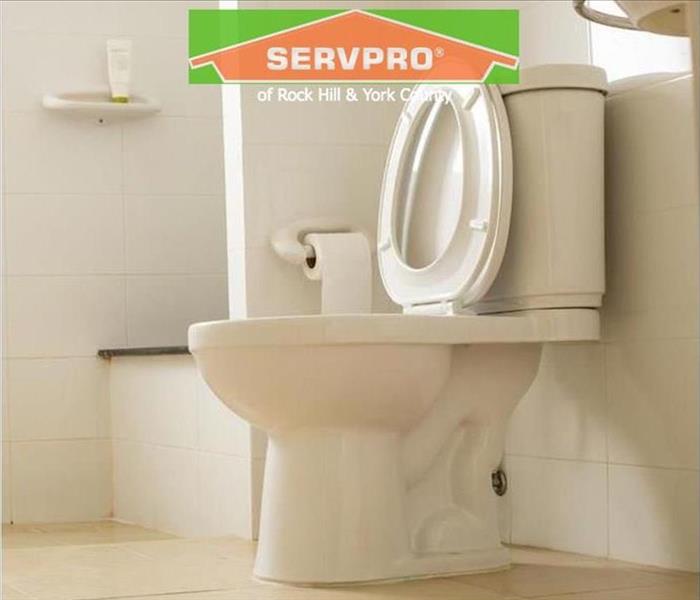What Not to Do After a Toilet Overflow
3/27/2019 (Permalink)
Toilets work around-the-clock removing waste from your home, and they’re bound to hit a bump in the road. When that hiccup is an overflow, things can get dangerous quickly. When potentially contaminated water is coming at you fast, it’s easy to make mistakes. Don’t make things worse. Learn what not to do when a toilet in your Fort Mill,SC home overflows due to sewer damage, clogs or other complications.
Why Toilets Overflow
Toilets aren’t complicated, but all of the mechanisms have to work together properly for them to function correctly. When that doesn’t happen, it’s often due to a blockage or damage. Other causes can include:
- Drain pipe blockages
- Blocked sewer lines
- Stopped up toilet traps
However it happens, your flooded toilet is a major source of contaminated gray water that has to be controlled fast.
Don’t Let It Run
The sooner you can stop the liquid, the sooner you can reduce sewer damage water and potential pathogen exposure. Locate the water shut off valve behind your toilet and stop the flow. Or, if you can’t find the valve, pry off the tank and block the float that lets water in.
Don’t Delay Clean Up
The water from a toilet is likely exposed to bacteria, and other pathogens so don’t waste time before cleaning up. Put on rubber gloves and use towels to absorb the water. Be sure to wash the towels thoroughly afterward.
Don’t Play Plumber
Sometimes it’s easy to see that something is blocking the toilet. But if you can’t see and remove it, call a plumber. That’s because gray water if left to sit, can become bacteria-laden black water quickly. Get a plumber in there to clean it up before this is a real hazard.
From sewer damage to old-fashioned clogs, there are lots of things that can cause toilet overflows. Tackle modest flooding yourself, but leave the tougher jobs to plumbers, a sewage company or your local water removal specialist.
Need a water damage restoration company in Rock Hill or Fort Mill call us today at 803-324-5780.





 24/7 Emergency Service
24/7 Emergency Service
